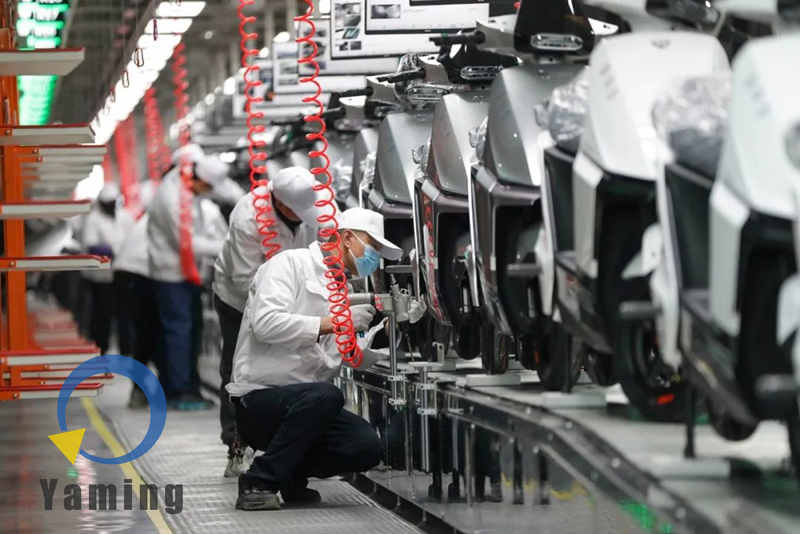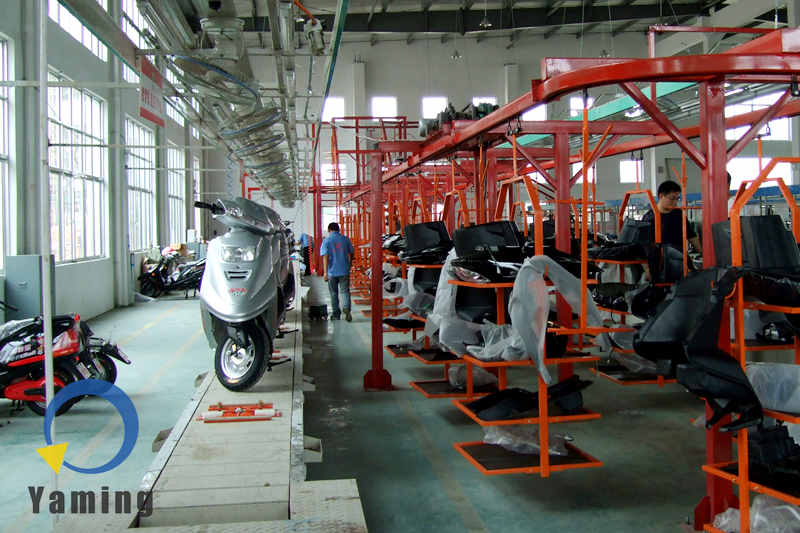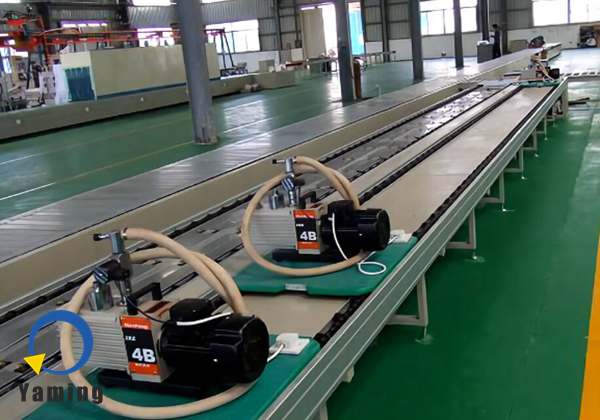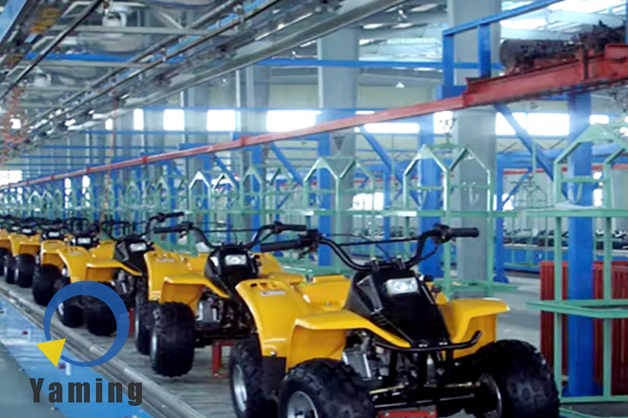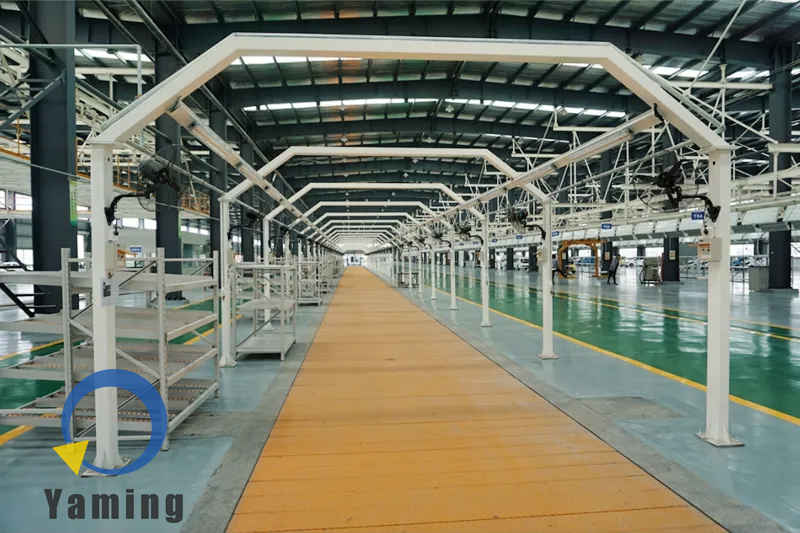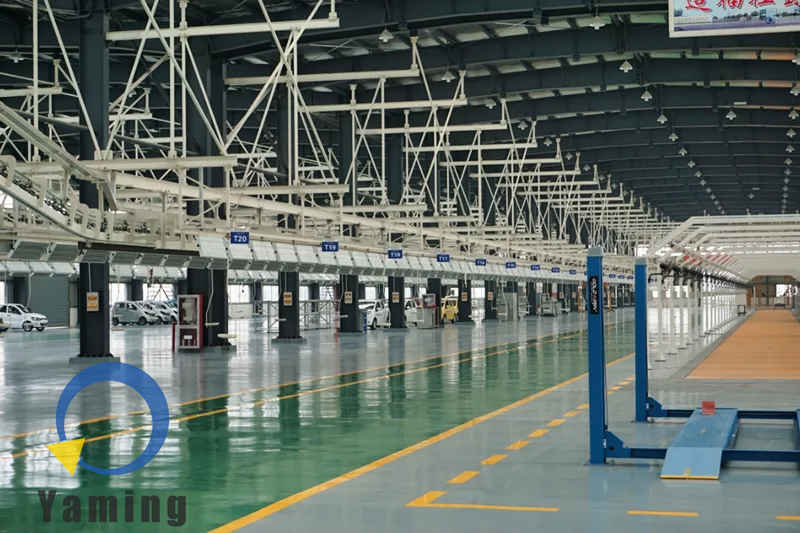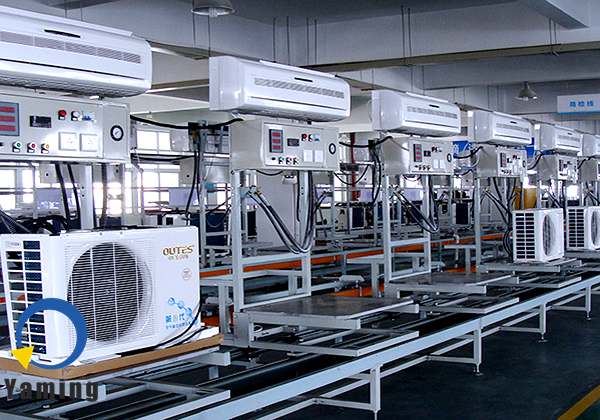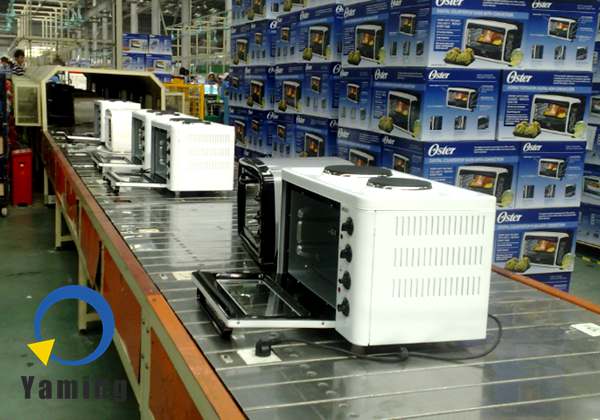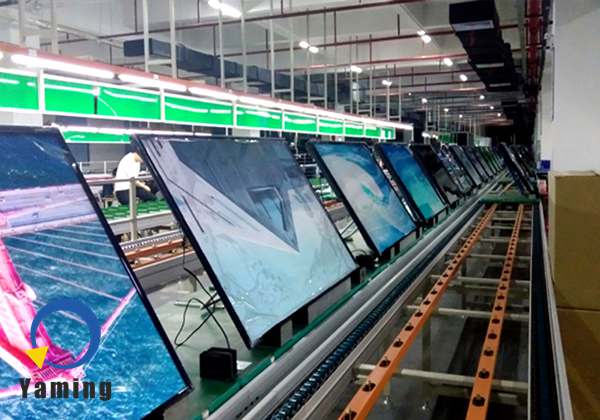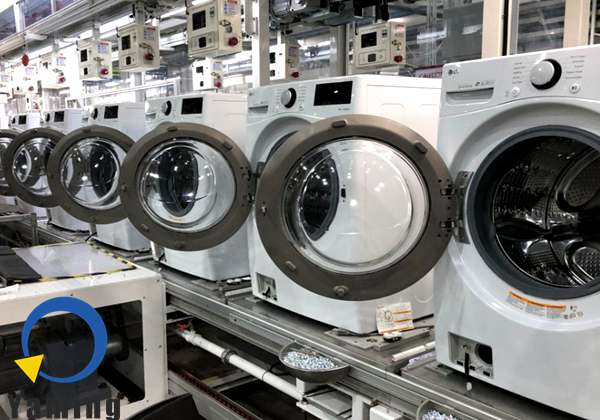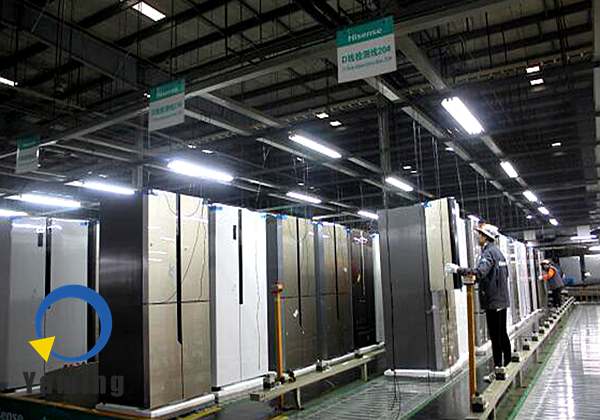1. Structure of microwave oven:
- Heating chamber: It is made of stainless steel and is an enclosed space for food heating. The inner wall is designed with protrusions to enhance microwave reflection.
- Microwave generation system: magnetron, high-voltage transformer), high-voltage capacitor, etc., is the core power source for heating.
- Control system: Including main control board, knob/button panel, timer, temperature sensor, control heating time, power and mode.
- Transmission and auxiliary structure: turntable motor, door, shell.
2. Automated conveying system:
- Microwave oven automated flow adopts double-speed chain conveyor lines.
- Application scenarios: Suitable for the assembly and transfer of microwave oven parts, such as transporting the control panel, turntable motor and other parts of the microwave oven from their respective pre-assembly stations to the final assembly station. The tooling board can be customized according to the component size, and the weight is usually 20-40kg.
3. The core advantages of microwave oven automation line:
- Efficiency improvement: The production cycle of a single manual production line is about 25-35 minutes, the automated line is compressed to 8-12 minutes, and the production capacity is increased by 2-3 times.
- Safe and controllable: The rate of poor microwave leakage dropped from 1.5% in manual production to below 0.1%, and the pass rate of electrical safety testing reached 99.9%.
- Cost optimization: Reduce labor requirements by 60-70%, and reduce material loss rates (such as cavities and magnetron) from 3% to 0.8%.
- Flexible adaptation: Support multi-model mixed-line production and quickly respond to the market demand for multi-function microwave ovens.
4. Contact information:
- If you have any questions or needs about the automated assembly line, please contact us via email: yaming_best@outlook.com


